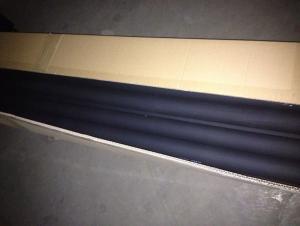Hey there, fellow DIY enthusiast or perhaps a professional in the field of ventilation systems! Today, we’re diving into the world of Canvas Flexible Duct Connectors, exploring why they are not just a durable option, but a downright smart choice for your ventilation needs. Strap in, because we’re about to embark on a journey through the ducts of knowledge! �️�
The Canvas Flexible Duct Connector: A Quick Overview
Before we get too deep into the nitty-gritty, let’s start with a brief introduction to our star of the show. The Canvas Flexible Duct Connector is a type of ductwork used primarily for connecting various components of a ventilation system. It’s made from a flexible material, which makes it incredibly versatile and easy to install. But don’t let its flexibility fool you; it’s also designed to withstand the test of time and the rigors of daily use.
Why Choose Canvas Over Traditional Ducts?
You might be wondering, with all the options out there, why should you opt for a Canvas Flexible Duct Connector? Well, let’s break it down:
– Flexibility: Unlike rigid ducts, canvas ducts can bend and twist, making them perfect for navigating tight spaces or those hard-to-reach areas.
– Durability: The canvas material is not only flexible but also robust, ensuring that your ducts can handle the wear and tear of daily use.
– Cost-Effective: When it comes to installation and maintenance, canvas ducts often prove to be more cost-effective than their rigid counterparts.
– Easy Installation: The ease of installation is a game-changer. With canvas ducts, you can save time and effort, which is music to any DIYer’s ears.
– Customizable: Need a specific length or diameter? No problem! Canvas ducts can be easily cut and adjusted to fit your unique setup.
Installation: A Step-by-Step Guide
Now that we’ve covered the benefits, let’s get our hands dirty with a step-by-step guide on how to install a Canvas Flexible Duct Connector. Don’t worry; I’ll hold your hand through the process. �
1. Measure and Mark: Start by measuring the distance between the points where your duct will connect. Mark the length on the canvas duct.
2. Cut to Size: Using a sharp utility knife, carefully cut the duct to the marked length. Be sure to make a clean cut for a better seal.
3. Prepare the Connections: Ensure that the ends of the duct and the connections are clean and free of debris.
4. Connect the Duct: Attach the duct to the ventilation system using the appropriate connectors. Make sure it’s secure to prevent any air leaks.
5. Seal the Joints: Use a high-quality duct tape or mastic to seal any joints or seams, ensuring a tight fit and preventing air loss.
6. Test the System: Once everything is connected, turn on your ventilation system and check for any leaks. If you hear hissing or feel air escaping, you may need to re-tighten connections or apply more sealant.
Maintenance and Care
To keep your Canvas Flexible Duct Connector in tip-top shape, follow these simple maintenance tips:
– Regular Inspections: Check your ducts periodically for any signs of wear or damage. Early detection can save you from bigger issues down the line.
– Clean Regularly: Dust and debris can accumulate over time, so it’s important to keep your ducts clean. Use a vacuum with a brush attachment to gently clean the interior.
– Replace When Necessary: If your ducts show significant wear or damage, it’s time to replace them. Don’t risk the efficiency of your ventilation system.
The Emotional Side of Ventilation
You might be thinking,

